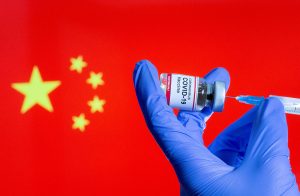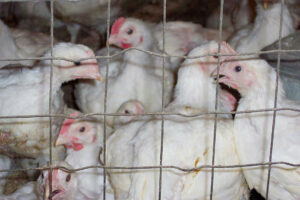Is the pandemic ending soon?

WHEN will this end? This question has been on everyone’s mind for many months. We are all tired of the pandemic. So naturally, we all want it to be over soon.
The government has started lifting restrictions. As a result, businesses can operate at full capacity, and people can travel freely irrespective of age or comorbidity. But that should not cause us to lower our guards — and masks.
During the Omicron wave in Jan. 2022, we saw a massive surge of coronavirus disease 2019 (COVID-19) cases. Fortunately, the risks of hospitalizations and deaths were lower. But that should not cause us to hesitate from getting COVID-19 vaccinations, including the booster doses, as required.
The pandemic is not over yet. We still need to get at least 70% of the total population vaccinated, with a greater focus on vaccinating the 2.4 million older adults who have not received even a single dose. In addition, we still need to continue masking, physical distancing, ensuring proper ventilation, and hand hygiene.
If we continue to do that, we will be ready for the next COVID-19 wave. But, if we stop doing that too soon, we will be wasting the lessons we have learned from the two years of living with the pandemic.
Using the tools we have and the lessons we learned, the Philippines can transition to sustained management of COVID-19. So let us do that collectively.
SUSTAINED MANAGEMENT OF COVID-19 AND PROTECTING THE MOST VULNERABLEThe Omicron variant is still around, and it can cause severe illness and even death, especially among more vulnerable and higher risk groups. Also, as Director-General of the World Health Organization (WHO), Tedros Ghebreyesus, has said: “It is dangerous to assume that the Omicron will be the last variant or that we are in the endgame.”
The COVID-19 virus is an unstable virus that changes rapidly and limits our ability to predict what will become of it next.
Therefore, countries, communities, and individuals should not “give up” or “neglect” precautions at this crucial juncture of the pandemic.
Living with COVID-19 is far from passive helplessness. Instead, it is about staying alert and getting ready. It is about adopting a risk-based approach, making intelligent choices, and comprehensively calibrating our tools and measures to keep surges at bay.
During the Delta surge, the Philippines used strict border control to delay the importation of the deadly variant. But as we know, severe movement restrictions and border control measures are not sustainable. While these measures did buy some time for health authorities to strengthen the country’s health capacity, the Delta variant caused widespread community transmission of the virus, overwhelmed many health facilities, and brought tragic losses in many families.
WHO has been supporting the Philippines with lifesaving vaccines from the COVAX Facility. In addition, the government procured vaccines from other sources. These efforts resulted in accelerated vaccination in most parts of the country.
However, large pockets of unvaccinated individuals remain in many provinces and cities. These individuals are at risk of severe infections and death. They may also serve as reservoirs of intense transmission and overwhelm healthcare capacities when the next wave strikes. In addition, immunity gained from vaccinations and natural infection may wane over time, making us susceptible again.
To date, the country has vaccinated over 63 million Filipinos. This is a considerable feat. The credit goes to the National Vaccination Operations Center, the local government units, and health workers and volunteers implementing vaccination drives.
And yet, challenges remain, with around 2.4 million senior citizens not receiving a single dose of COVID-19 vaccines. Vaccinating the elderly must be an absolute priority as they are at high risk of severe disease and death from COVID-19. Other high-risk groups include healthcare workers, other essential frontline workers, immunocompromised individuals, and people with comorbidities. Until every priority group is protected, no community is safe.
We need more community-based vaccinations at the barangay level to reach the unvaccinated. These have to include house-to-house vaccinations or close-to-home vaccination drives.
The transition from acute pandemic response to sustained management of COVID-19 will depend upon how the virus evolves and a combination of vaccination, public health and social measures and other factors, including the behavior of individuals.
Filipinos have high compliance to mask-wearing, and we must keep this habit to prevent virus transmission and infection among the most vulnerable. Besides, mask-wearing also protects us from other infectious diseases (e.g., influenza, tuberculosis) and air pollutants.
Let us continue to work on the proactive surveillance of COVID-19 variants and other emerging diseases. Contact tracing and monitoring of confirmed cases among the vulnerable groups must continue. And there must be timely advice on how people can continue protecting themselves, their loved ones, and their communities.
RECOVERING FROM COVID-19 AND PREPARING FOR THE NEXT PANDEMICIt is never too early to prepare for the next pandemic, as sadly, COVID-19 will not be our last. As we recover from this crisis, we should build systems to detect and respond to future public health emergencies. They have to be collaborative, multi-sectoral, and inclusive.
The solution is three-fold: strengthening health systems’ resilience, bringing health services closer to the people through Universal Health Care (UHC), and investing in pandemic preparedness and response.
Saving lives starts with investing in health and health systems. The Philippines must invest in health workers by building their capacity and supporting their well-being. The country should also invest more in empowering individuals for self-care and healthier lifestyles to reduce the risk of diseases. By doing that, we would collectively build resilient health and community systems that are not easily overwhelmed by health emergencies.
The government needs to continue to use COVID-19 as an opportunity to roll out UHC. Through UHC, it is possible to promote health and prevent disease at the primary healthcare level. UHC is one of the most sustainable ways to serve the vulnerable and the wider community’s needs.
To detect and respond to outbreaks, including pandemics, we need to invest in better tools for health surveillance. The WHO has a “Hub for Pandemic and Epidemic Intelligence.” This hub can support health authorities worldwide with data, analytics, and expertise in surveillance.
We can minimize the impact of COVID-19 this year with what we know and the tools we have. But that will depend on how long transmission continues and how the virus evolves. That will also depend on how quickly and effectively we prioritize protecting the most vulnerable. We need to do these not just in the Philippines but all over the world. Let us continue to use the lessons from COVID-19 to build back better.
Dr. Rajendra Yadav is the Acting WHO Representative to the Philippines. Dr. Sangjun Moon is the Incident Manager for COVID-19 Response at WHO Philippines.




